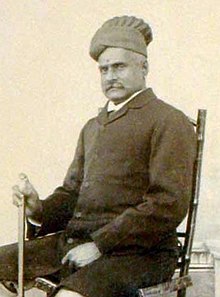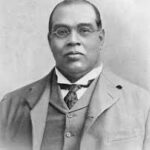Raja Ravi Varma: 7 Fascinating Facts About the Master of Indian Art
Raja Ravi Varma, one of India’s most iconic painters, is widely regarded as the father of modern Indian art. Born on April 29, 1848, in Kilimanoor, Kerala, his contributions to art and culture have left an indelible mark on Indian history. Known for blending Indian traditions with European techniques, Varma’s work was revolutionary in its time, making classical Indian subjects more accessible and relatable to the general public. His art not only elevated Indian culture but also bridged the gap between Indian mythology and the realities of everyday life.
Early Life and Training
Raja Ravi Varma was born into an aristocratic family with a deep appreciation for the arts. His early exposure to the cultural and artistic milieu of Kerala helped shape his future path. He was mentored by many great local artists, but it was his natural talent and perseverance that truly set him apart. At the age of 14, Varma began learning to paint under the guidance of his uncle, who was a court painter. His artistic journey was further enriched by studying the works of European artists, particularly the Renaissance masters, which led to his fusion of traditional Indian art with Western techniques.
Raja Ravi Varma’s work was deeply rooted in Hindu mythology, and he is best known for his depictions of gods, goddesses, and mythological characters. His ability to bring these figures to life, with rich colors, dramatic lighting, and emotion, captured the imagination of millions.
Major Contributions to Art
- Bridging Indian and European Art Styles: Varma’s ability to combine European realism with Indian themes was groundbreaking. His mastery of oil painting, which was relatively new to India at the time, allowed him to create works that were both technically advanced and culturally resonant. The attention to detail, use of perspective, and rich color palette made his paintings stand out in the Indian art world.
- Revival of Indian Mythological Themes: Raja Ravi Varma is perhaps most famous for his depictions of Hindu gods and goddesses, especially figures from the Ramayana and Mahabharata. His paintings brought these mythical characters to life in ways that had never been seen before. He created some of the most iconic images of Indian mythology, such as his famous depictions of Lord Vishnu, Lord Krishna, and Goddess Lakshmi. These images not only transformed the way people saw these deities but also made Indian mythology more accessible to the masses.
- Art for the People: One of the most remarkable aspects of Raja Ravi Varma’s career was his desire to make art accessible to a larger audience. He recognized that art should not be confined to royal courts or galleries but should be shared with the people. To achieve this, he set up a printing press in Mumbai in 1894, where he reproduced his paintings in the form of lithographs. These prints made his work available to the masses, allowing ordinary people to bring his art into their homes. This democratization of art was revolutionary at the time.
- Influence on Indian Cinema: Raja Ravi Varma’s work had a profound impact on the early Indian cinema. His paintings, particularly those of mythological figures, served as visual references for many film posters and set designs. Even today, the aesthetic of Raja Ravi Varma’s work can be seen in many Bollywood films, particularly those that depict gods, goddesses, and mythological stories.
- A Pioneer in Portraiture: In addition to his mythological works, Raja Ravi Varma was also a skilled portrait artist. He painted portraits of the royals, nobility, and prominent personalities of his time. His ability to capture the likeness of his subjects with great detail made his portraiture highly sought after, further establishing his reputation as a master of the craft.
- Art as a Form of Nationalism: During the British colonial period, Raja Ravi Varma’s work became a symbol of cultural pride. At a time when the British were imposing their own cultural norms on India, Varma’s art served as a reminder of India’s rich cultural heritage. His paintings of mythological heroes and deities became symbols of resistance, and his work helped to foster a sense of Indian identity and nationalism.
- Legacy and Influence: Raja Ravi Varma’s influence on Indian art can still be felt today. His unique fusion of traditional Indian themes with European techniques revolutionized the art scene in India. Many contemporary Indian artists have cited him as an inspiration, and his works continue to be celebrated and revered. His paintings are displayed in galleries and museums worldwide, and his legacy as one of the greatest artists in Indian history is firmly established.
Daily Life and Impact
Despite his fame, Raja Ravi Varma led a humble and disciplined life. He spent much of his time in his studio, painting, sketching, and experimenting with new techniques. His commitment to his craft was unwavering, and he often worked for long hours to perfect his art. Although his work was widely recognized and celebrated, he was also a man of great personal humility, always striving to improve his skills and learn from his peers.
Varma’s paintings were not just works of art but tools for cultural preservation. In an era where much of India’s cultural heritage was under threat from British colonialism, Raja Ravi Varma’s paintings played a vital role in preserving Indian mythology, folklore, and traditions. His work helped foster a deep sense of national pride and unity among Indians, who saw in his art a reflection of their own rich cultural history.
Important Facts About Raja Ravi Varma
- Royal Recognition: Raja Ravi Varma was honored with the title “Raja” by the Maharaja of Travancore, which gave him both a prestigious status and financial security.
- Prolific Artist: He painted hundreds of portraits and mythological scenes during his career. His ability to produce high-quality work consistently made him a household name in India.
- Artistic Education: Varma was largely self-taught, although he was influenced by European art. His exposure to Western techniques helped him develop his own unique style.
- Influence on Popular Culture: His depictions of Hindu gods and goddesses, as well as mythological heroes, have shaped the popular visual culture of India, especially in the realm of religious imagery.
- Artistic Legacy: Raja Ravi Varma’s influence can be seen in everything from contemporary Indian art to film posters and even advertisements. He remains one of the most beloved and respected figures in Indian art history.
FAQs
Q: Why is Raja Ravi Varma considered the father of modern Indian art?
A: Raja Ravi Varma is considered the father of modern Indian art due to his pioneering efforts to blend traditional Indian themes with Western art techniques. His work was revolutionary in making Indian art more accessible and relatable to the public.
Q: What was the significance of Raja Ravi Varma’s lithographs?
A: Raja Ravi Varma’s lithographs democratized art by making his paintings available to the masses. These prints allowed ordinary people to bring his art into their homes, greatly expanding his influence and reach.
Q: What are some of Raja Ravi Varma’s most famous paintings?
A: Some of Raja Ravi Varma’s most famous paintings include “The Birth of Shakuntala,” “Lady with the Lamp,” “Vasantika,” and “The Jatayu Vadh,” among many others. His depictions of gods and goddesses, particularly from the Ramayana and Mahabharata, are iconic.
Q: How did Raja Ravi Varma influence Indian cinema?
A: Raja Ravi Varma’s mythological paintings influenced the aesthetic of early Indian cinema, particularly in the design of film posters and set designs for mythological films. His art helped shape the visual style of Indian cinema in its formative years.
Conclusion: Raja Ravi Varma’s Enduring Legacy
Raja Ravi Varma was a visionary artist who revolutionized Indian art by blending the best of Indian traditions with European techniques. His paintings, particularly those of mythological figures, have left an indelible mark on Indian culture and continue to inspire new generations of artists and art lovers. Through his work, he was not only able to capture the essence of India’s rich heritage but also made it accessible to a wider audience, ensuring his place as one of India’s greatest artists. Today, his legacy lives on, and his contributions to Indian art remain an integral part of the country’s cultural fabric.










